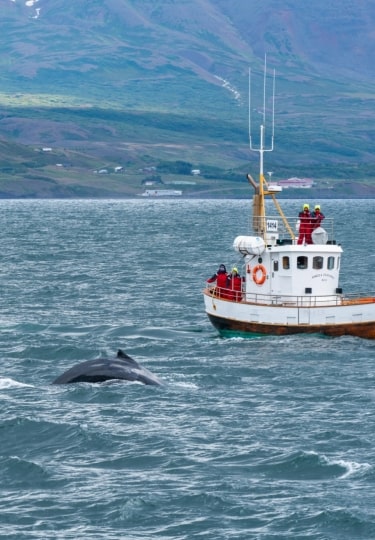There’s something magical about spotting graceful whales in the wild. The thrill of seeing humpbacks leap clear out of the water and crash down with a mighty splash is almost indescribable.
You can spot whales all around the world, often in places that may seem inhospitable and even unlikely. These adaptable animals thrive in both tropical and ice-cold water, and many of them migrate between climatic extremes.
Here are 12 of the best places to go whale watching in the world.
Icy Strait Point, Alaska
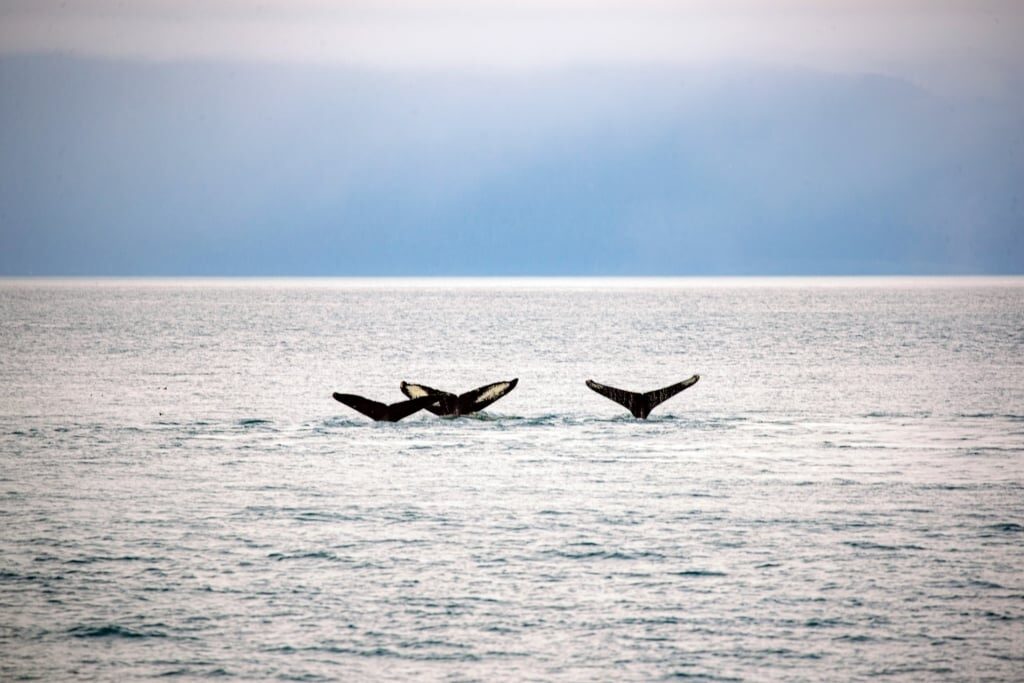
Icy Strait Point, Alaska
The nutrient-rich waters around forested Icy Strait Point on Chichagof Island present a banquet to many of Alaska’s population of 10,000 whales in the summer.
You could see humpbacks out in the bay from the shore, or while on a whale-watching tour on which the eagle-eyed crew will help you spot these giant mammals, which can weigh up to 80,000 pounds.
Humpbacks are the most acrobatic of whales, with a repertoire of movements that includes tail and fin slapping, “spy hopping”, when the whale pokes its head out of the water for a look around, and breaching, when it leaps right out of the water. Any of these is a thrill to watch.
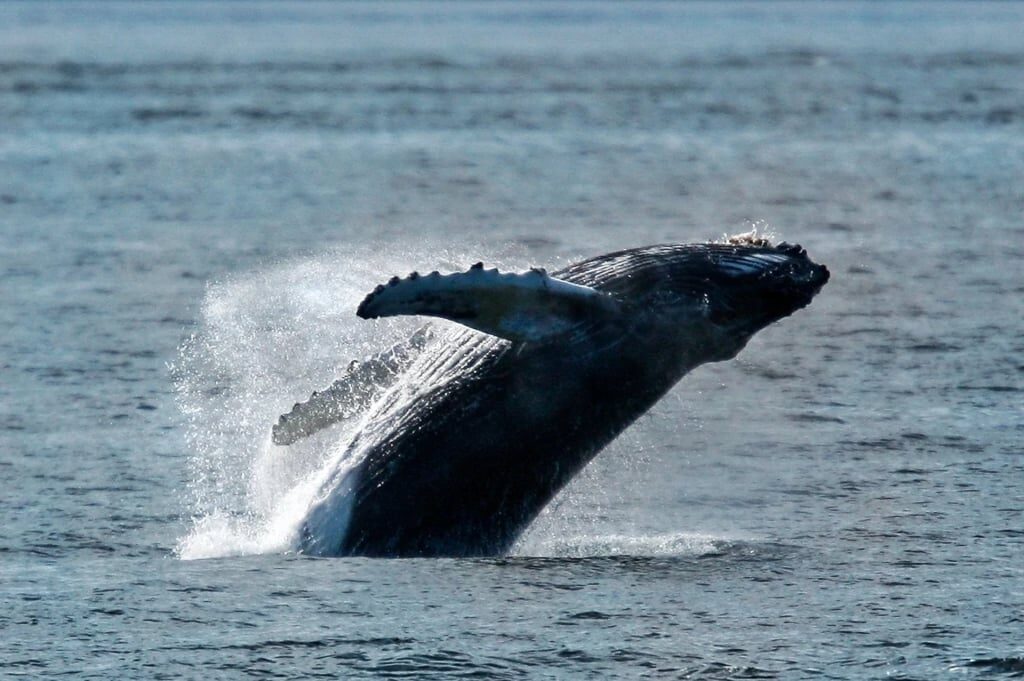
Humpback whale
Humpbacks are baleen whales, which means they don’t have any teeth, but feed by scooping up vast amounts of water and the small fish and krill it contains.
You could see several whales together, cooperating in herding fish, particularly young herring. They blow a giant net of bubbles to confuse the fish and send them into a tight ball, then move in for a feast.
Orcas, or killer whales, which are toothed whales and efficient hunters, also frequent these waters. They’re distinguished by their long, black dorsal fin and their black-and-white markings.
Antarctica
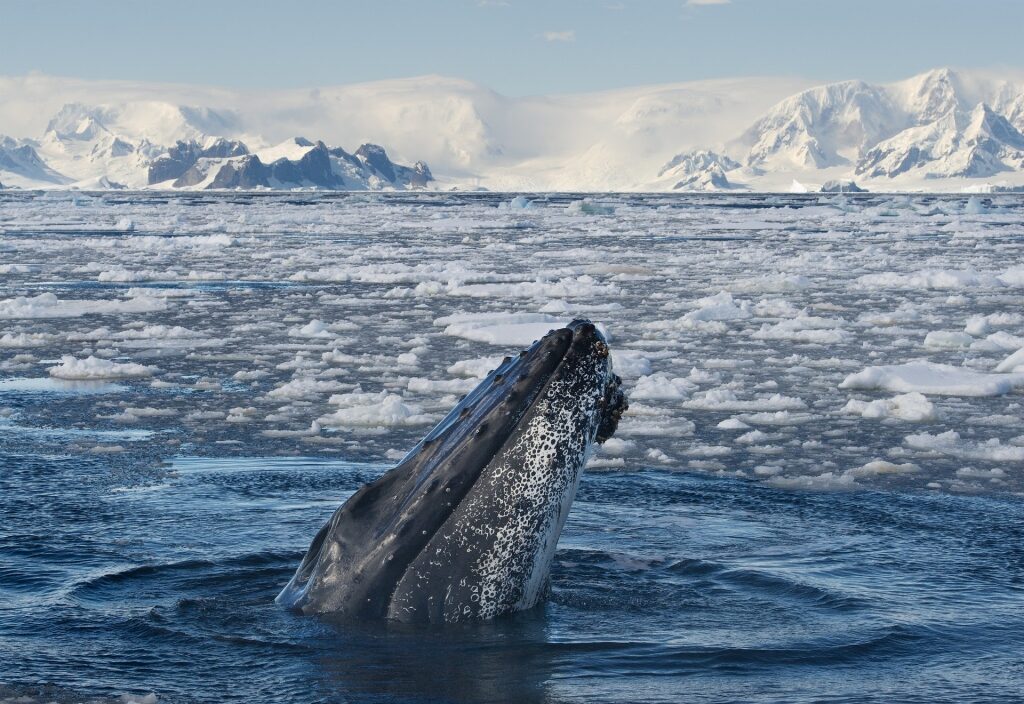
Humpback whale in Antarctica
The icy whiteness of Antarctica may seem inhospitable, but the White Continent is a paradise for whales thanks to the high concentration of food.
Baleen whales, including humpback and the mighty blue whale, the biggest animal on the planet, come here to feast on tiny crustaceans called krill. A single blue whale can consume up to 40 million krill every day, and the food source is plentiful here.
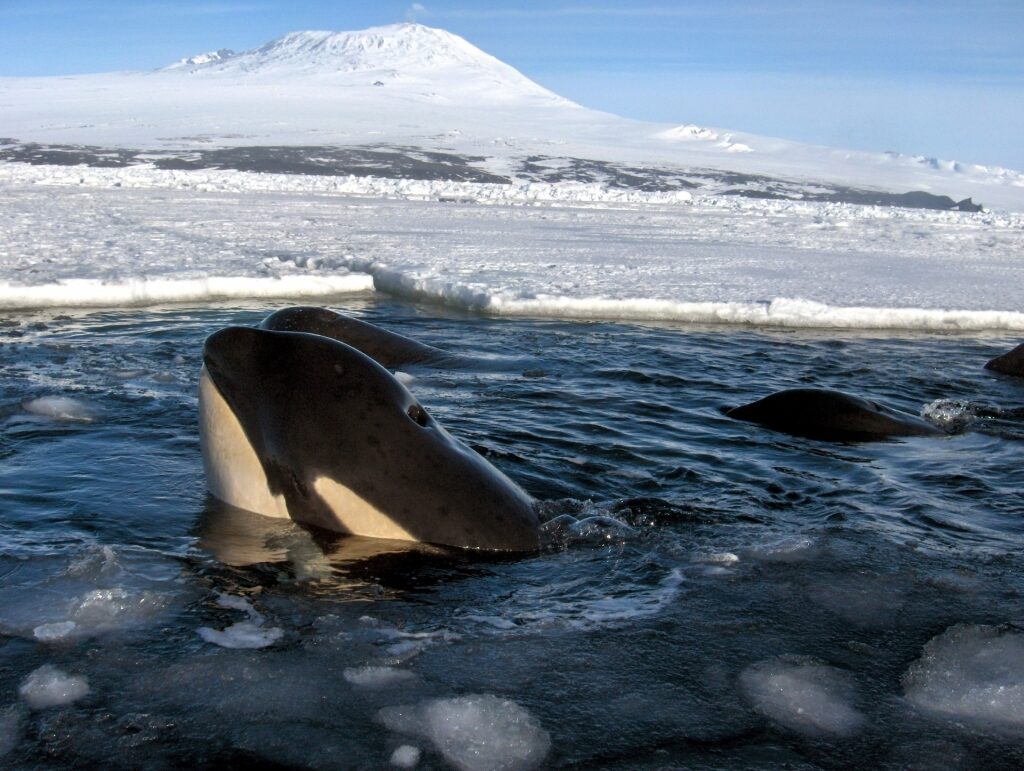
Orca in Antarctica
Other whales you could spot include orcas, which hunt seals and penguins, as well as fin, minke, sperm, sei and southern right whales.
The best months for sightings when you visit Antarctica are February and March. The seals are here year-round, though, so you won’t be short of mammal sightings if you come on either side of whale-watching season.
Canary Islands, Spain
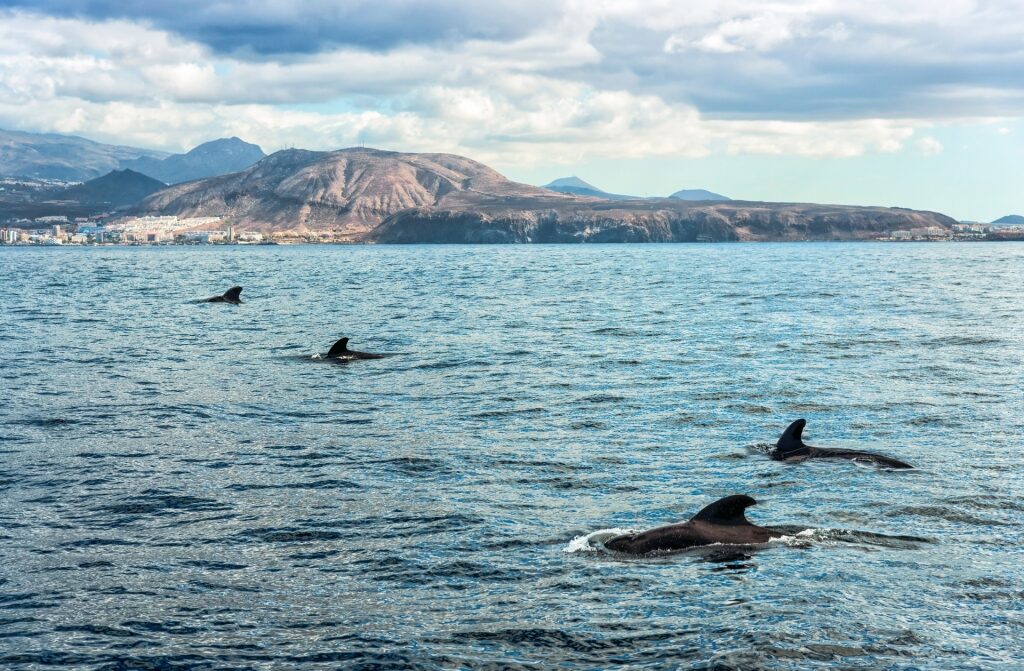
Pilot whales in the Canary Islands, Spain
The sunny Canary Islands, scattered off the coast of West Africa, are one of the best places to go whale watching—and to spot dolphins. The islands are all volcanic, their rocky shores plunging straight into clear, deep water.
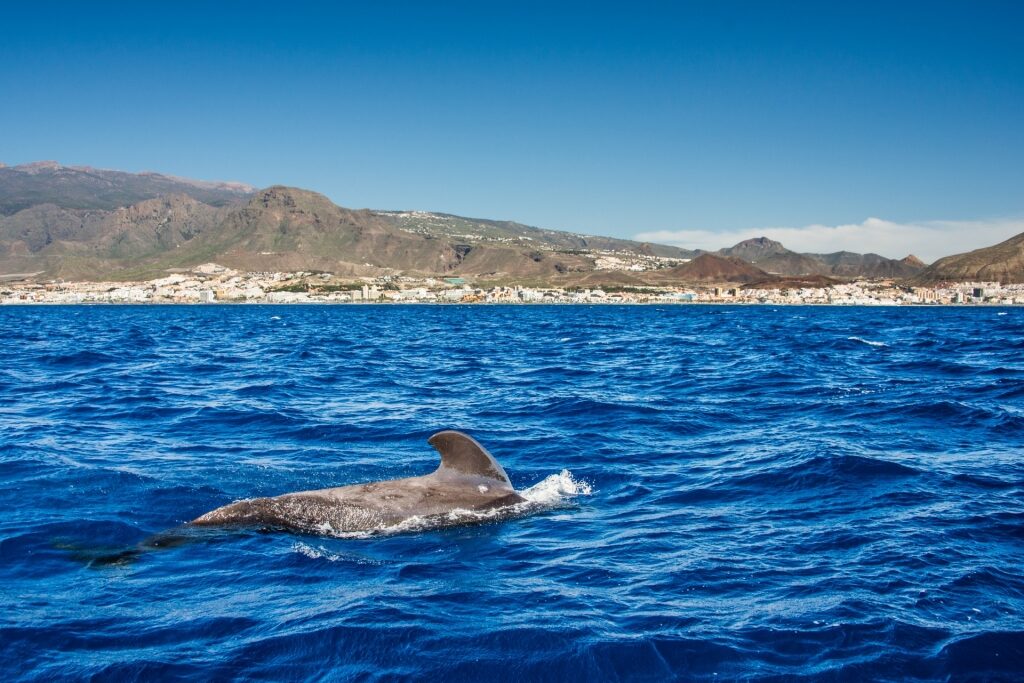
Pilot whale in the Canary Islands, Spain
Several species of whales and dolphins live here year-round. Visit at any time of year and you’re likely to spot pilot whales and bottlenose dolphins, which are curious animals and may come close to whale-watching boats. Sperm whales and Bryde’s whales are also common.
Several migratory species pass through the Canary Islands, too, among them orcas, humpback whales, fin whales, and enormous blue whales. Winter and spring are the best months to spot these graceful creatures.
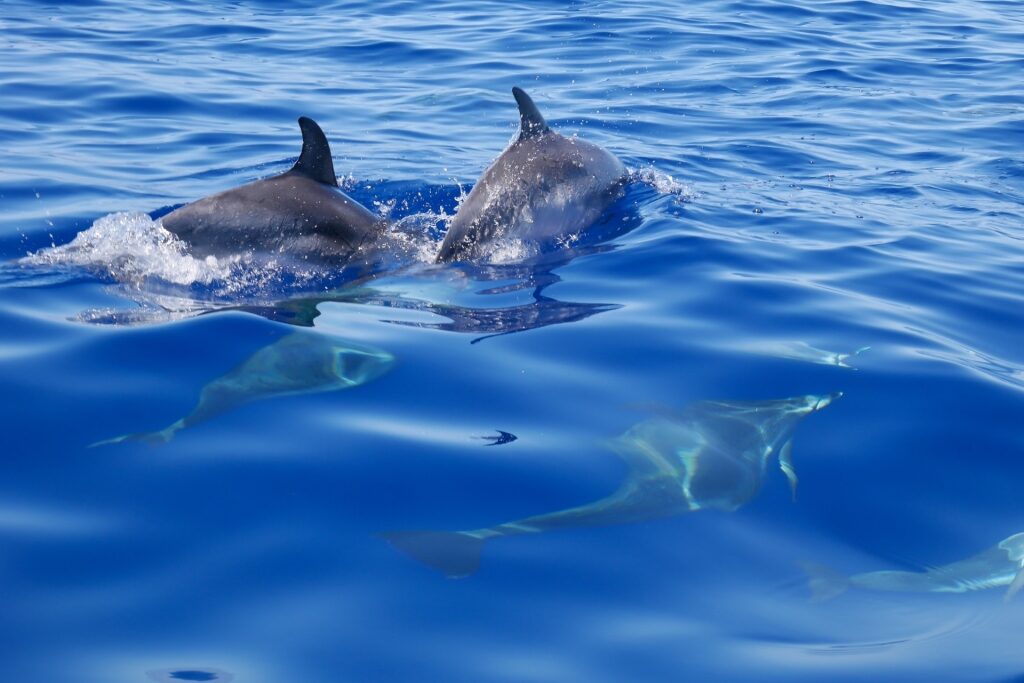
Spotted dolphins
Dolphin sightings in the Canaries might include Atlantic spotted, common, striped, and Risso’s dolphins. Learning to tell them apart is all part of the fun.
Azores, Portugal
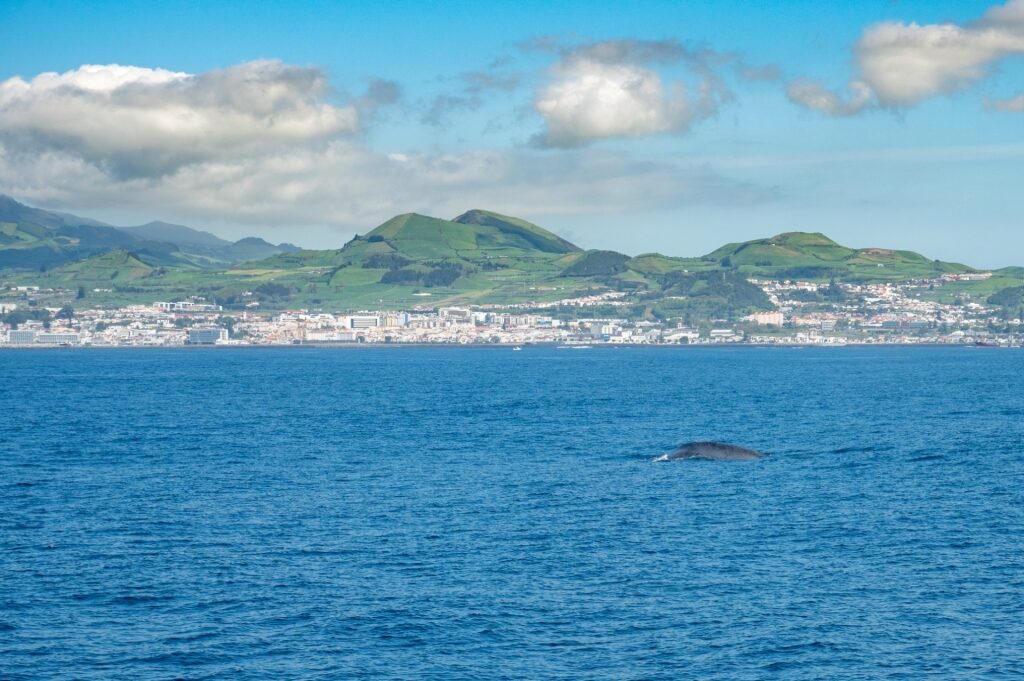
Azores, Portugal
The volcanic Azores may be part of Portugal, but the archipelago is way out in the Atlantic, 948 miles from the motherland.
The clear, deep waters here mean that the islands are a prime whale-watching location, especially between April and September. The early season is the best time to look out for the blue whale, which is the holy grail of marine mammals to many enthusiasts due to its sheer size.
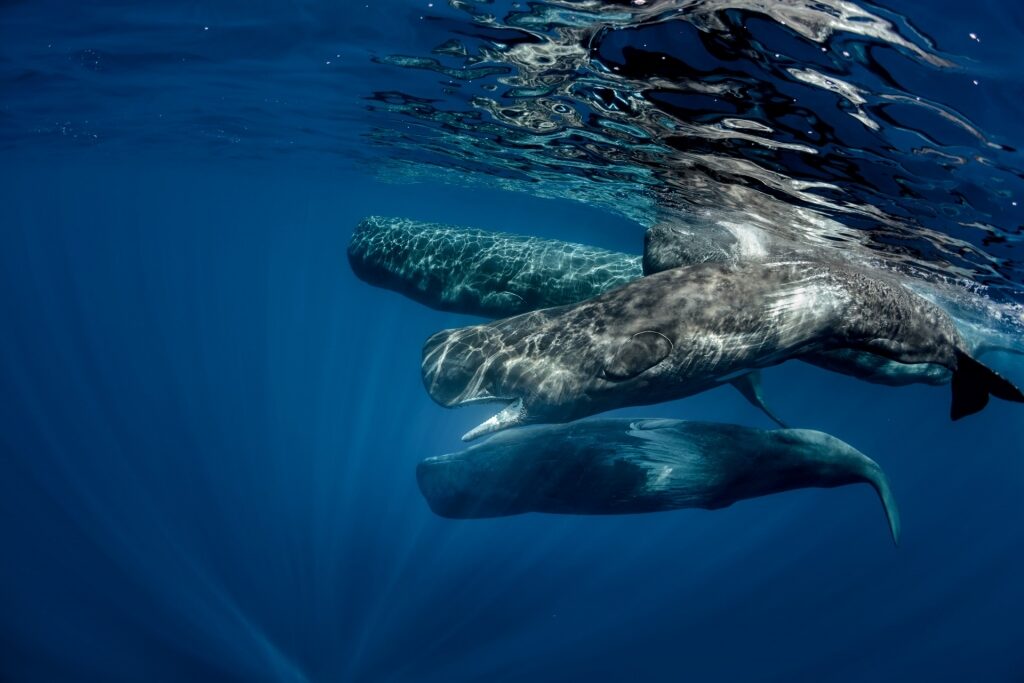
Sperm whales in Azores, Portugal
You should also see sei, fin, and humpback during early summer on their migratory routes to the north, while there are resident species, too. Look out for sperm whales, pilot whales, and various species of dolphin.
While manta rays are not marine mammals, they are an absolutely breathtaking sight when they leap out of the water, flipping like pancakes. Spotting this phenomenon is highly possible on a whale-watching trip as an added bonus.
Vancouver Island, Canada
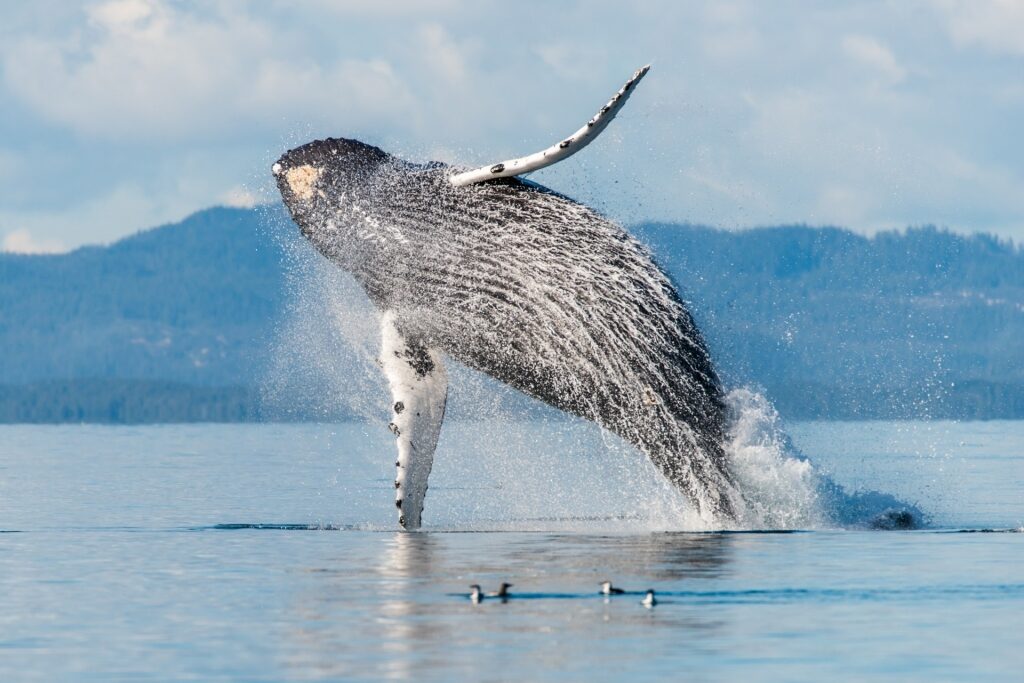
Humpback whale in Vancouver Island, Canada
Mountainous Vancouver Island, 285 miles long, lies close to the mainland of Canada’s British Columbia.
The narrow channel between the two bodies of land is rich in wildlife, including gray, minke and humpback whales, as well as sea lions and seals. Because the waters here are protected, they’re often silky-smooth, which increases your chances of a sighting.
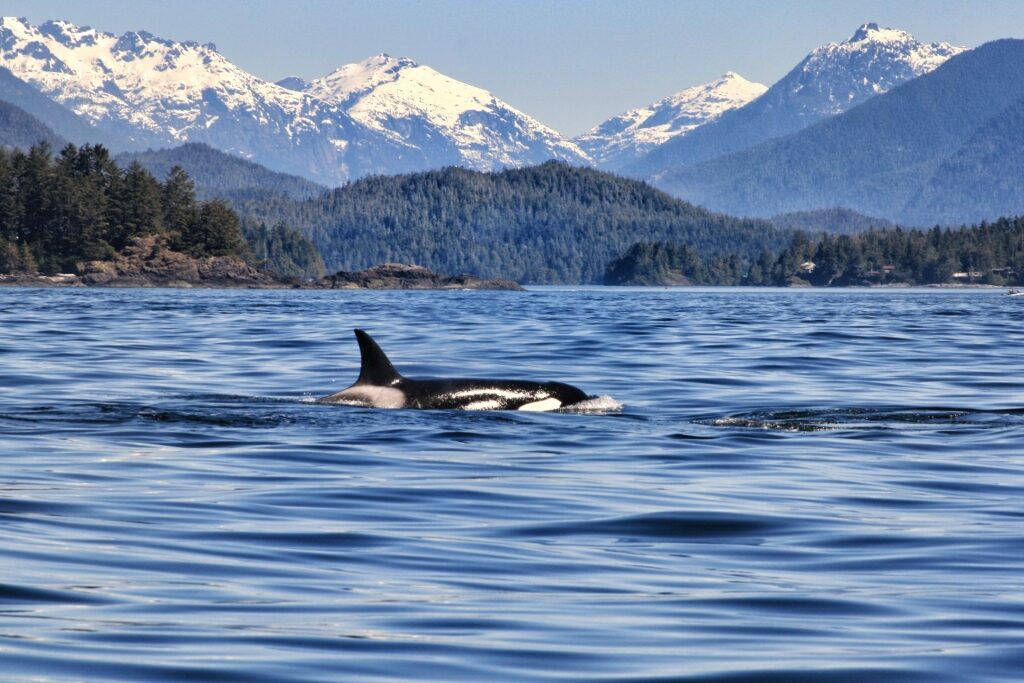
Vancouver Island, Canada
Vancouver Island is one of the best places to see orcas in the wild, so prolific that you can hardly miss them if you keep a constant watch.
Orca often swim in pods and are easy to distinguish as their dorsal fin is jet black and points straight upward. It’s also long in comparison to other species; a male orca can have a dorsal fin that’s more than six feet high.
While you’re orca-spotting, you could see a pod cruising with a tiny fin in its midst; the females will group together to protect a calf, a perfect miniature of an adult.
Bay of Islands, New Zealand
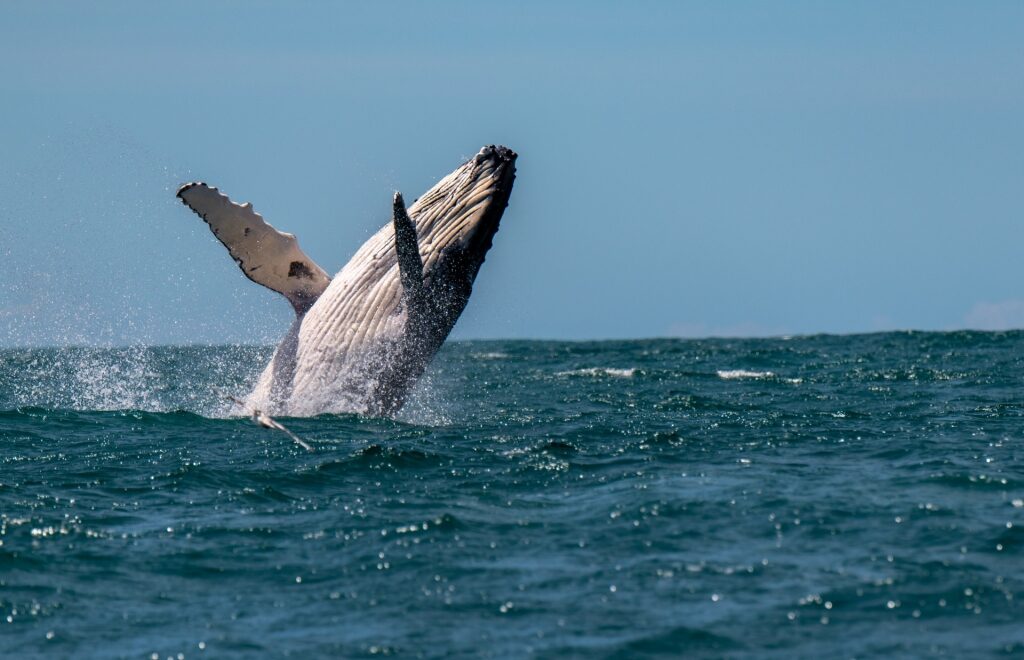
Humpback whale in the Bay of Islands, New Zealand
Whale and dolphin watching in the serene aquamarine waters is one of the best things to do in the Bay of Islands. Take a guided whale-watching tour for the best chance of spotting the resident marine mammals.
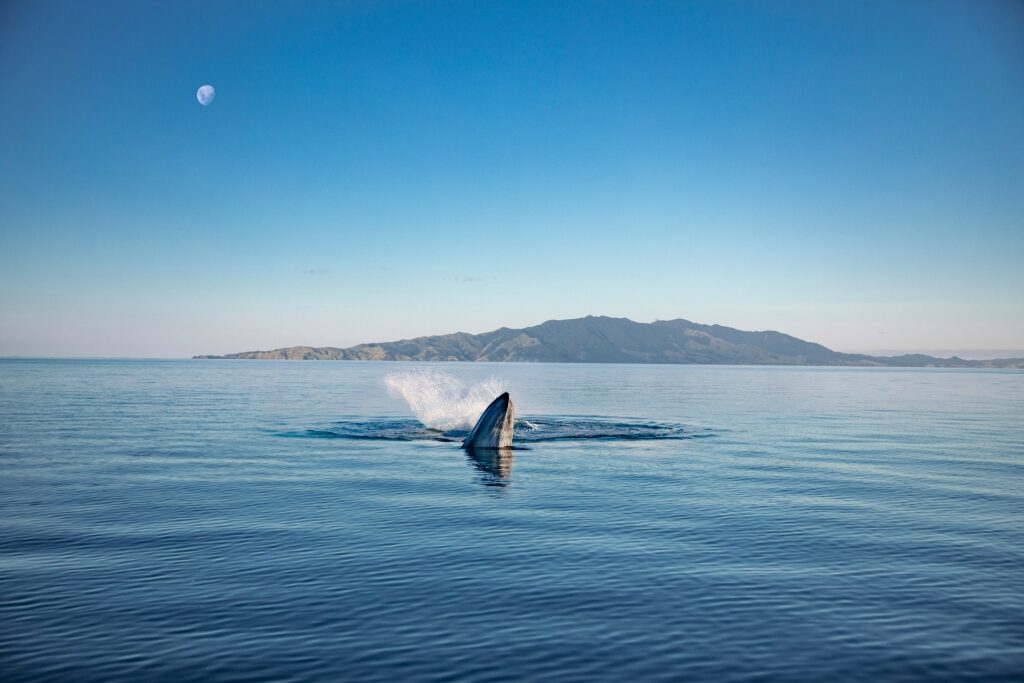
Bryde’s whale in the Bay of Islands, New Zealand
A tour of the bay might reveal orca as well as pilot whales, dark gray or black whales with rounded, beaky heads and stocky bodies. This is also one of the best places to see the endangered Bryde’s whale, blue-gray in color, with a white underside and two blowholes.
You could also spot common dolphins and the larger bottlenose dolphins, often in large pods, sometimes consisting of mixed species. A pod of dozens of animals swimming together, jumping, and playing is a humbling sight.
Maui, Hawaii
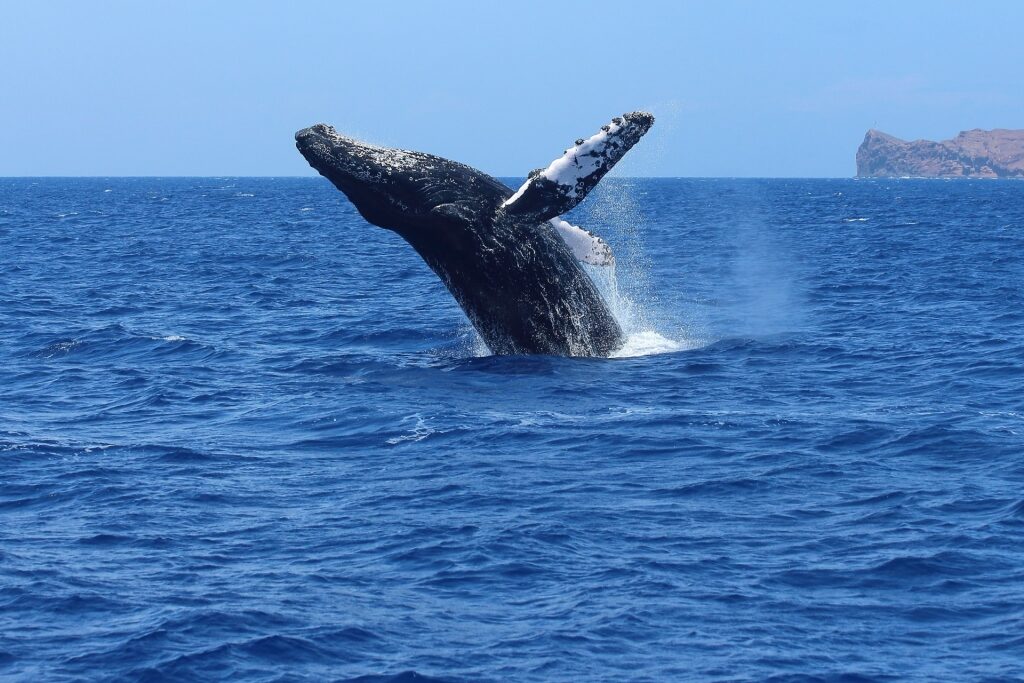
Humpback whale in Maui, Hawaii
Hawaii is blessed with an enormous population of humpback whales, or koholā, as they’re known here; it’s reckoned that some two-thirds of all humpbacks resident in the north Pacific migrate between Hawaii, where they breed and calve, and Alaska, where they head in summer to fatten up.
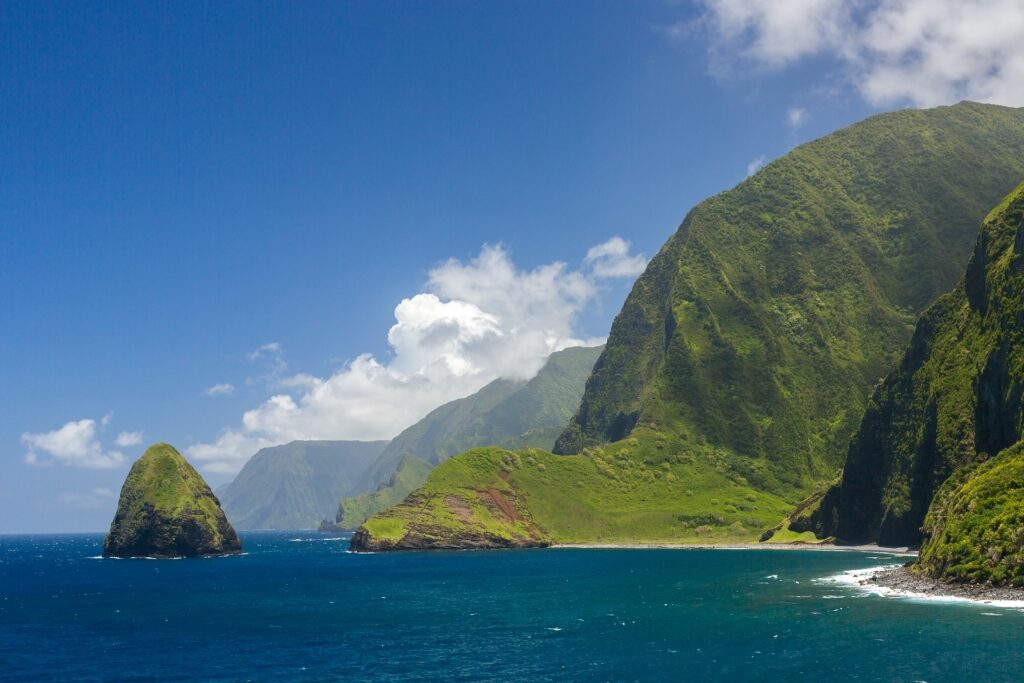
Moloka’i, Hawaii
December to May is the best time to spot these graceful creatures, and the shallow channel between Maui, Moloka’i and Lāna’i is one of their favorite feeding grounds.
Humpback whales are important to Native Hawaiians, who regard them as guardians and celebrate the annual arrival of the whales as a homecoming. Whales are featured in several local legends and have been revered here for centuries.
Akureyri, Iceland
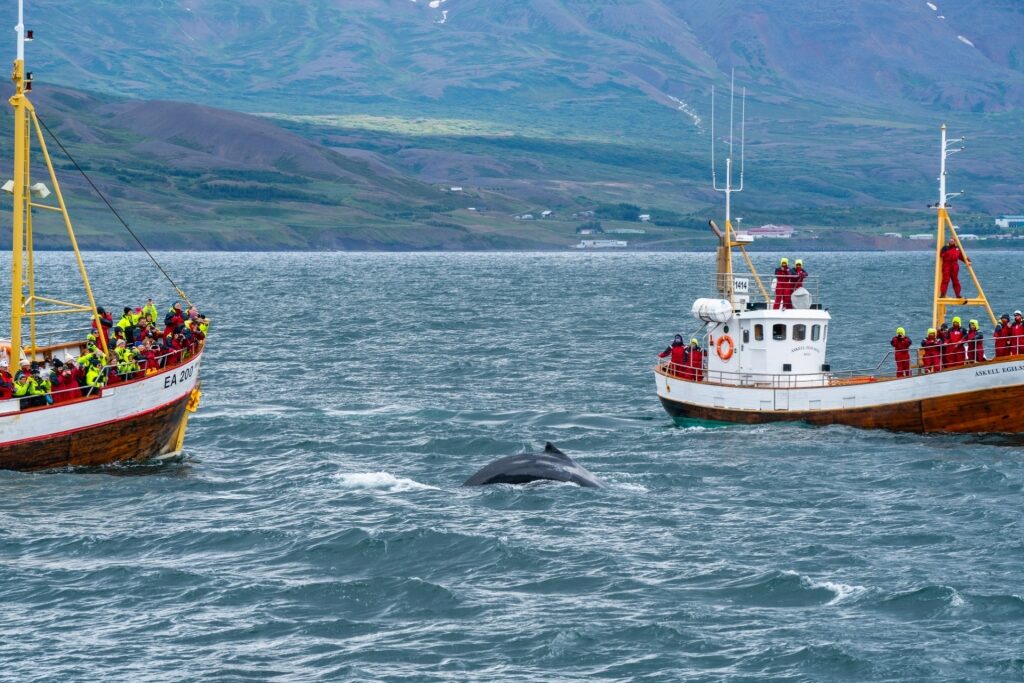
Akureyri, Iceland
While whales and dolphins can be seen all around Iceland’s fertile waters between May and September, Akureyri, at the end of a deep fjord, and the neighboring town of Husavik, see themselves as the whale-watching capitals of the island.
You could join a whale-watching trip from Reykjavik, the capital, too. In summer, Iceland is, without doubt, one of the best places to go whale watching in the world.
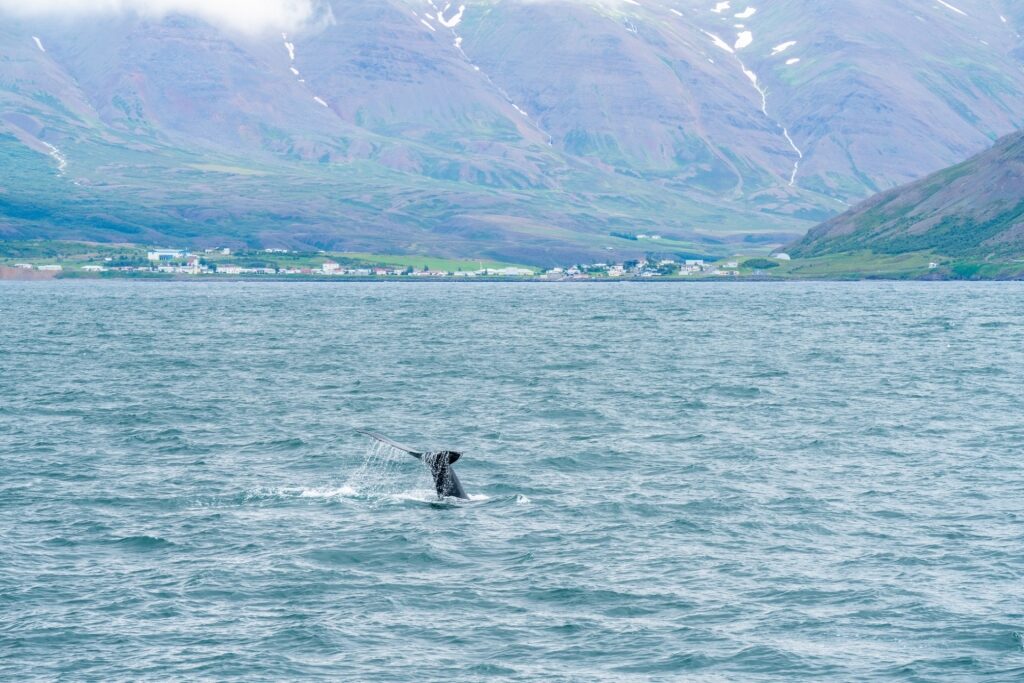
Akureyri, Iceland
The whales you see in Iceland are migratory, heading here in summer to feed and give birth. Some 23 species have been spotted, but minke whales are the most common, and humpbacks the most visible, thanks to their acrobatic performances.
Harbor porpoise and blue whales can also be spotted, while orca are common in the waters around Husavik during summer in Iceland and may zoom right under your whale-watching boat.
Juneau, Alaska
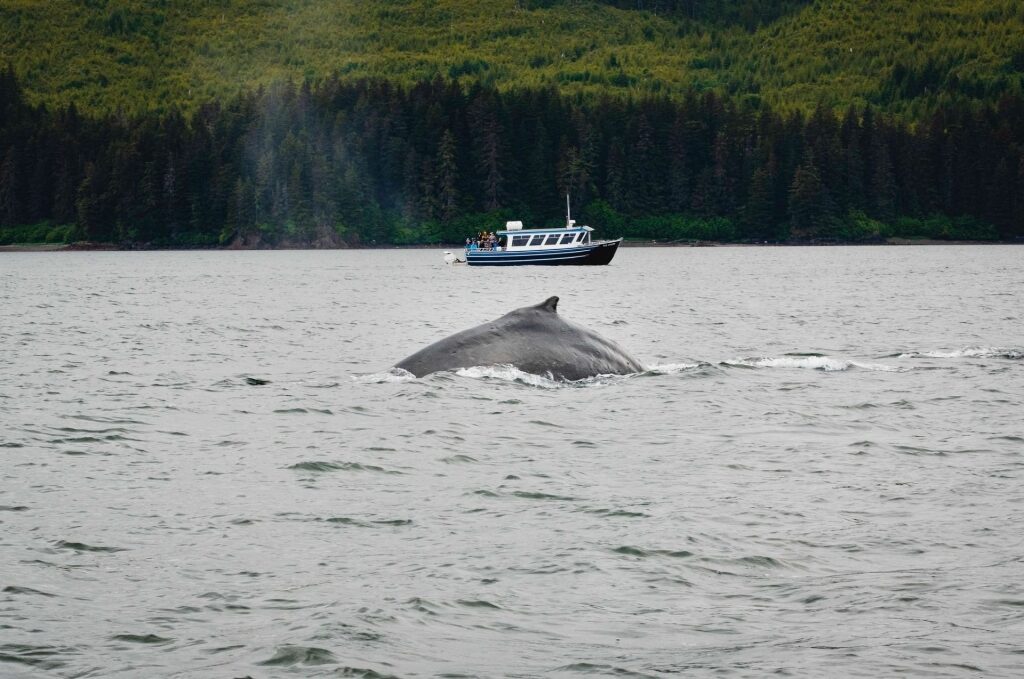
Juneau, Alaska
Juneau, the compact capital of Alaska, located on the mountainous, island-specked Inside Passage, is a prime whale watching spot. One of the best things to do in Alaska is to take a whale-watching cruise for the best chances of a sighting.
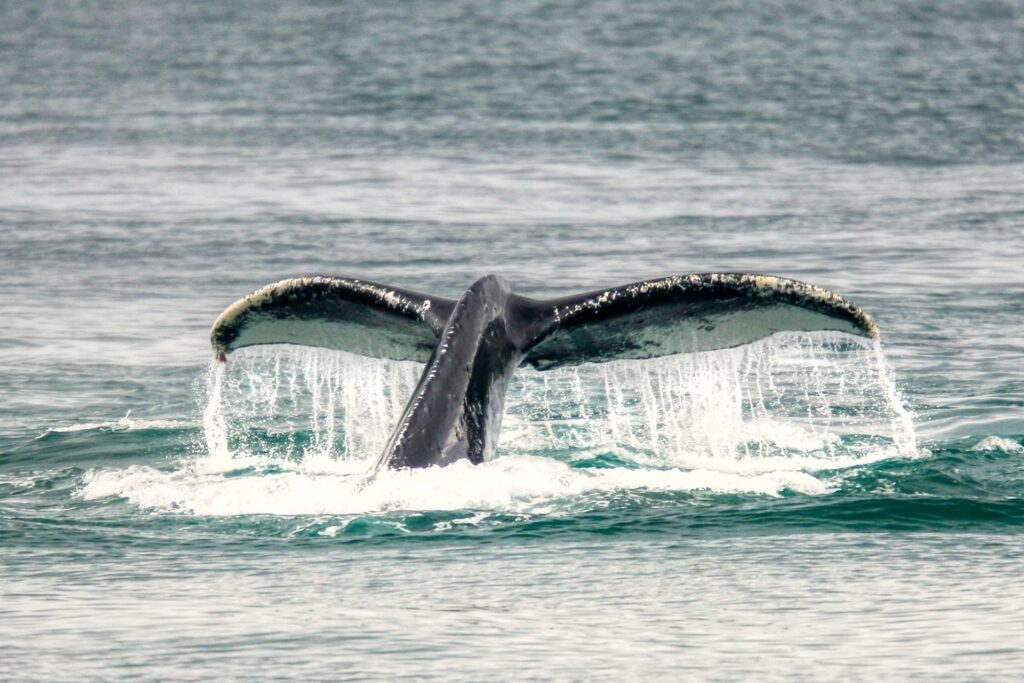
Humpback whale in Juneau, Alaska
Humpbacks feed in the deep canyons between the forest-tufted islands outside nearby Auke Bay. While sightings aren’t guaranteed, the chances of spotting a whale blow and, with luck, much closer up, are high here.
The humpbacks you see in Alaska breed in Hawaii during the winter and migrate to the cooler northern waters of the Gulf of Alaska in summer to feed.
Other marine mammals to look out for around Juneau include minke and fin whales, Dall’s porpoises (which resemble mini-orcas), and harbor porpoises.
You could also spot other Alaskan animals such as Steller sea lions, hauled out on rocky islands in big colonies, and harbor seals popping up next to your boat to check you out.
Cabo San Lucas, Mexico
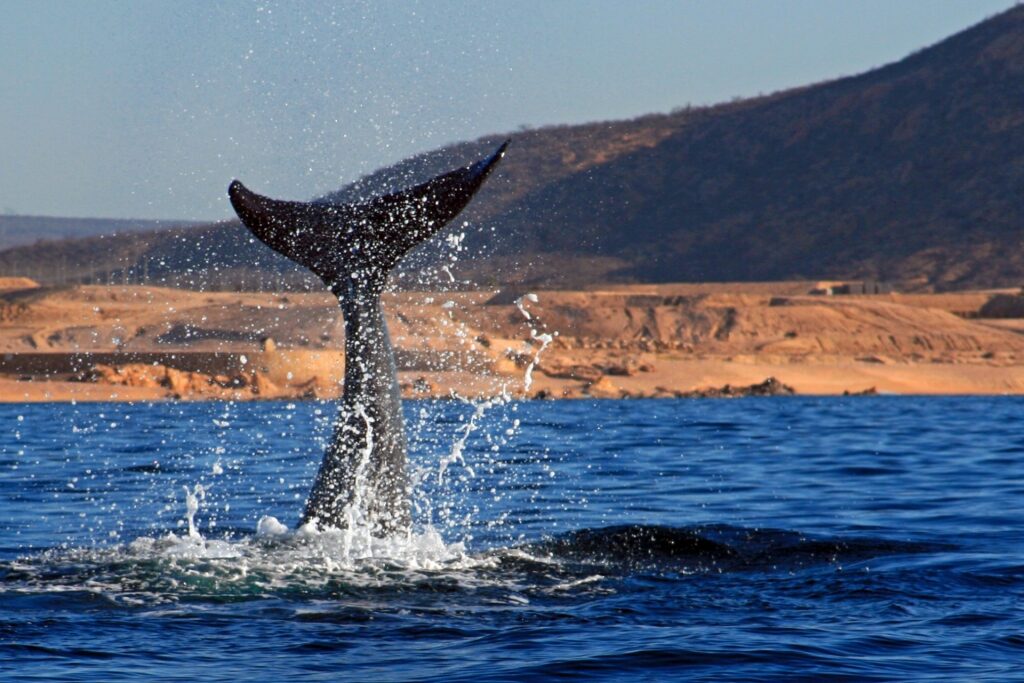
Sea of Cortez in Cabo San Lucas, Mexico
Gray and humpback whales migrate to the balmy waters of the Sea of Cortez between December and April. Here, they will mate, and give birth.
Spotting a gray whale and her tiny calf is something that should be regarded as an honor, particularly as the whales are so trusting of small boats and will swim up close.
Fishing villages in the region that once hunted these beautiful creatures now work to protect them, so both whales and locals win.
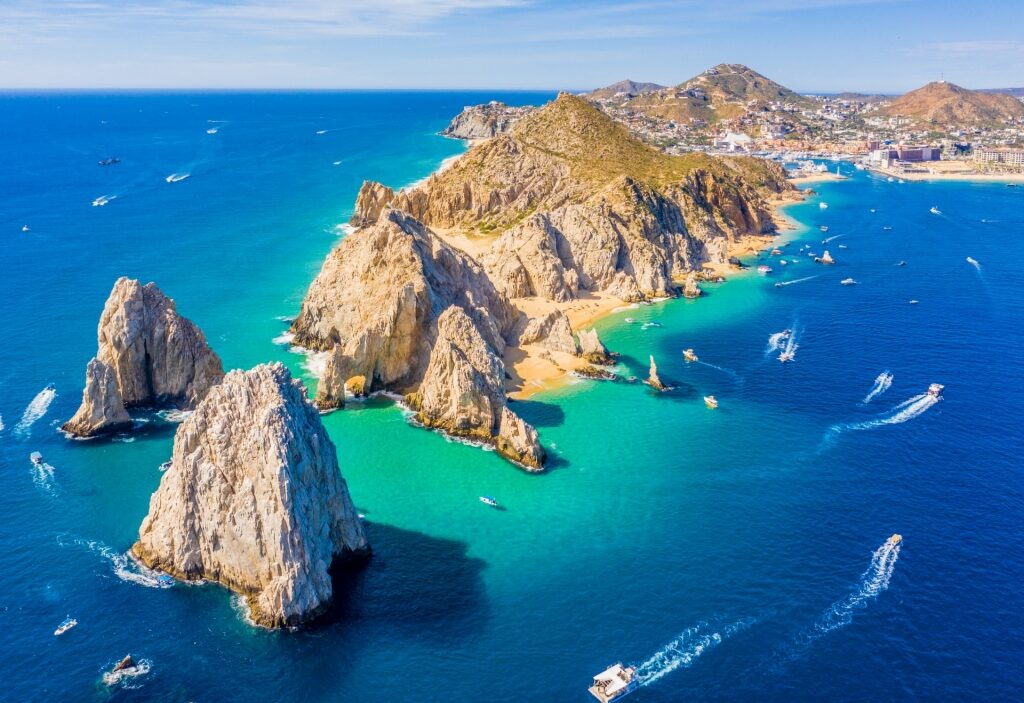
Land’s End in Cabo San Lucas, Mexico
One of the best things to do in Cabo San Lucas is to join a whale-watching trip, where mountains and desert meet the sparkling sapphire sea.
As well as gray and humpback whales, you could be rewarded with sightings of bottlenose and common dolphins, and sea lions basking on the rocks. Look out, too, for sea turtles popping their heads up to take a breath.
Monterey, California
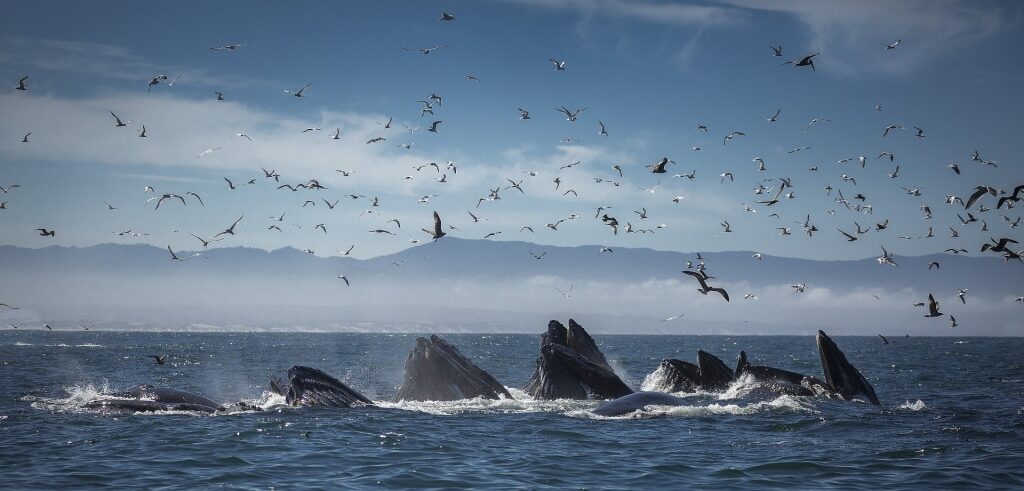
Humpback whales in Monterey Bay, California
Monterey is a great place to spot whales, for various reasons. First, there’s a year-round population here. Second, you could even spot whales from the cliffs, as they come close to the shore to feed in the nutrient-rich Monterey Submarine Canyon.
One of the best things to do in Monterey is to take out a paddleboard or a kayak on a calm day, where you could find yourself with giant-sized company.
Humpbacks, orcas, and dolphins are present in the waters off Monterey throughout the year. You could see huge blue whales between May and September, and gray whales between December and April. Fin and minke whales also put in regular appearances.
Galapagos, Ecuador
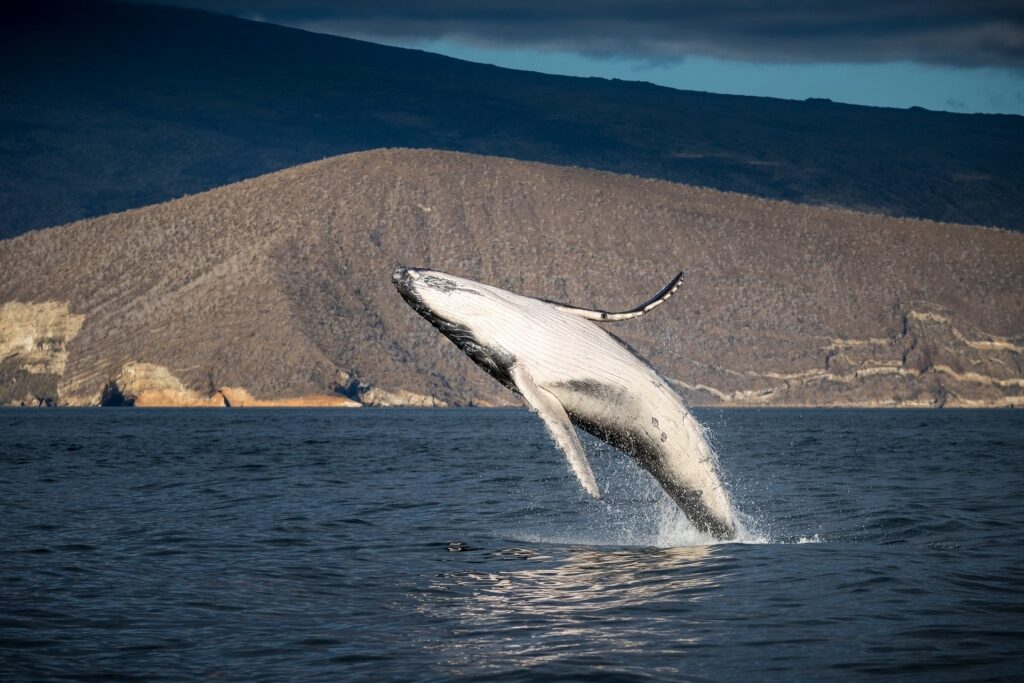
Isabela Island in the Galapagos, Ecuador
Some 24 species of whale have been spotted in the volcanic Galapagos Islands, 850 miles off the coast of Ecuador, isolated in the middle of the Pacific.
Most of these whales are migratory and tend to pass through between July and December, when the weather and the water are cooler, and there’s more food.
While you’ll be rewarded with countless sightings of Galapagos animals, from marine and land iguanas to all manner of bird life and sea lions, if you want to make whales part of the adventure, time your visit carefully.
In season, you could spot a vast range of whales, from minke to sei, Bryde’s, fin, and the ubiquitous and beloved humpback. You could also see orca and sperm whales, both toothed whales (and as such, hunters), as well as common and bottlenose dolphins.
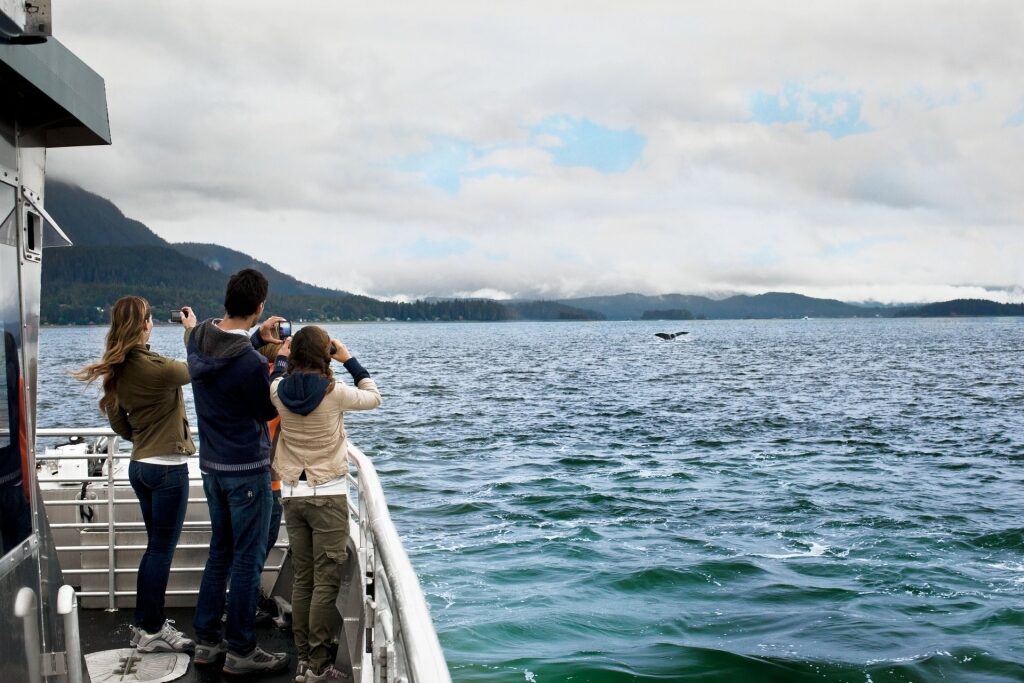
Whale-watching in Alaska
Are you keen to spot whales and dolphins in some of the world’s most beautiful locations? Browse Celebrity’s itineraries and plan your next marine mammal safari.
